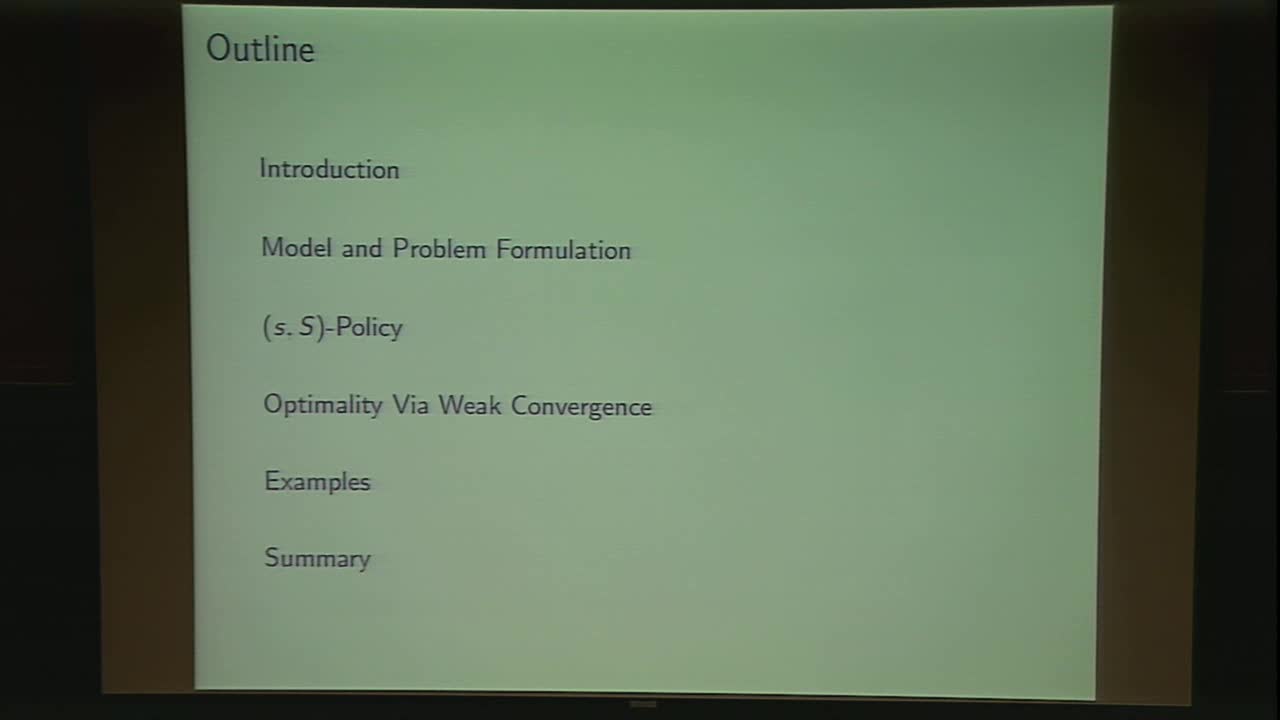A Weak Convergence Approach to Inventory Control Using a Long-term Average Criterion
Presenter
May 7, 2018
Keywords:
- inventory, impulse control, long-term average cost, general diffusion models, $(s,S)$ policies, weak convergence
Abstract
This work considers an optimal inventory control problem using a long-term average criterion. In absence of ordering, the inventory process is modeled by a one-dimensional diffusion on some interval of $(-\infty, \infty)$ with general drift and diffusion coefficients and boundary points that are consistent with the notion that demands tend to reduce the inventory level. Orders instantaneously increase the inventory level and incur both positive fixed and level dependent costs. In addition, state-dependent holding/backorder costs are incurred continuously. Examination of the steady state behavior of $(s, S)$ policies leads to a two-dimensional nonlinear optimization problem for which a pair of optimizers establishes the levels for an optimal $(s*, S*)$ policy. Using average expected occupation and ordering measures and weak convergence arguments, weak conditions are given for the optimality of the $(s_*,S_*)$ ordering policy in the general class of admissible policies. The analysis involves an auxiliary $C^2$ function that solves a particular system of linear equations and inequalities related to but different from the long-term average Hamilton-Jacobi-Bellman equation. This approach provides an analytical solution to the problem rather than a solution involving intricate analysis of the stochastic processes. The utility of these results is illustrated on drifted and geometric Brownian motion inventory models under conventional and non-conventional cost structures.
